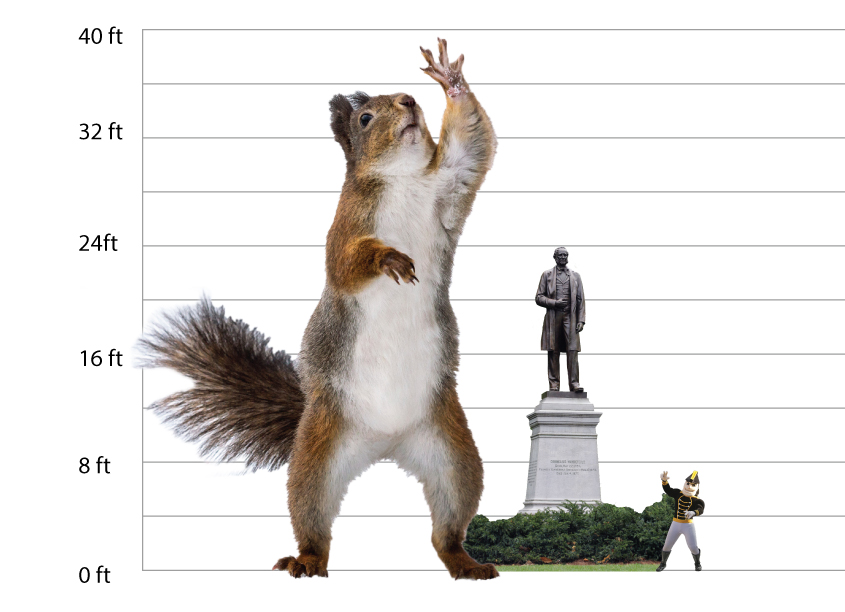Vanderbilt's Biggest Discovery Yet
Vanderbilt archaeological dig uncovers tantalizing clues to Tennessee’s past
April 1, 2016
NASHVILLE, Tennessee—Students taking an archaeological excavation course on the Vanderbilt University campus made an unexpected discovery earlier this month during their excavation of the old servant’s cottage that once stood behind the Vaughn Home on Alumni Lawn.
“The unusually warm winter allowed the class to continue working straight through to spring, giving our students the chance to move all the way into some exciting late-Pleistoscene contexts, including evidence of very early paleoindian activity,” said Steve Wernke, associate professor of anthropology, who is teaching the course.
“And that’s when I found the fang,” said freshman Sandeep Kumar.

After further excavation, the class eventually uncovered an intact skeleton of what appears to be a giant, long-tailed prehistoric rodent measuring 52 feet in length. It likely stood 39 feet tall upright and may have weighed as much as five and a half metric tons. It is also believed to be female, leading the students to nickname the animal “Cornelia.”
Vanderbilt experts were quick to undertake preliminary analyses of the find.
“Until now, the paleosquirrel was believed to be a myth,” said Angela Santiago, a Ph.D. candidate in Earth and environmental sciences whose dissertation research focuses on carnivorous Pleistoscene megafauna. “Though its modern descendants only rarely consume insect or small animal life, Cornelia’s dentition suggests she was predominantly carnivorous.”

“The proximity of the remains to several bifacial stone projectile tips suggests that Tennessee’s earliest residents may have had a violent encounter with Cornelia,” said Wernke.
“Though we don’t yet know who ate whom,” added Tiffiny Tung, associate professor of anthropology. “A stable-isotope analysis will give us a better idea.”
“Given the importance and inherently interdisciplinary nature of the finding, we plan to submit a TIPs (Trans-Institutional Program) grant request to further explore its anthropological, zoological and philosophical implications,” he said. “In many ways, we see this as bringing Vanderbilt’s history full circle. Squirrels are an iconic part of our campus life today. Clearly they were 10,000 years ago as well.”
Related Stories
Resources
Keep Exploring
-
 VUCAST: Digging for history in the middle of campus
VUCAST: Digging for history in the middle of campus
-
 VUCast video goes to new format to reach burgeoning demographic
VUCast video goes to new format to reach burgeoning demographic
-
 Researchers observe higher than normal midichlorian count in squirrels
Researchers observe higher than normal midichlorian count in squirrels
-
 Celebrating Squirrel Appreciation Day
Celebrating Squirrel Appreciation Day
-
 New FDA guidelines recommend 15 SPF for humans and squirrels
New FDA guidelines recommend 15 SPF for humans and squirrels
-
 New University policy prohibits squirrels feeding humans
New University policy prohibits squirrels feeding humans